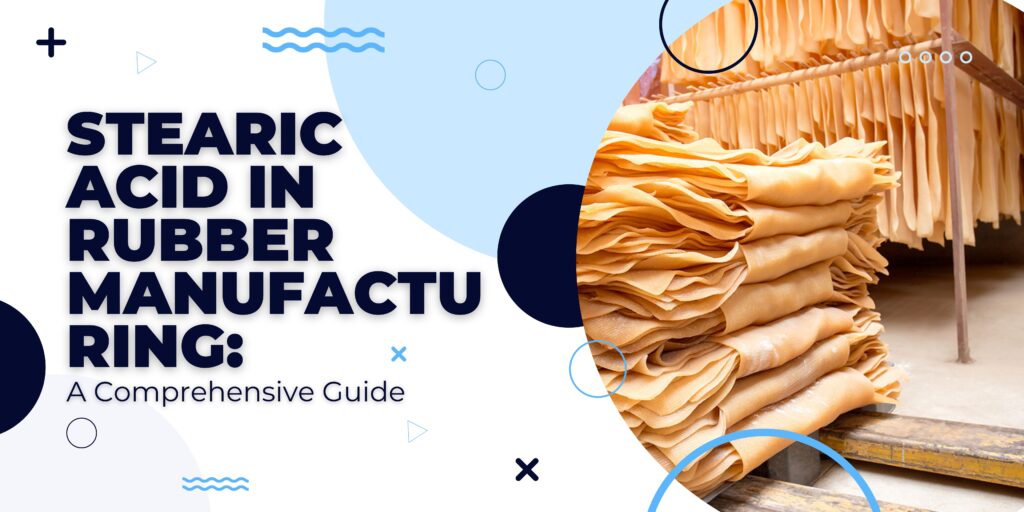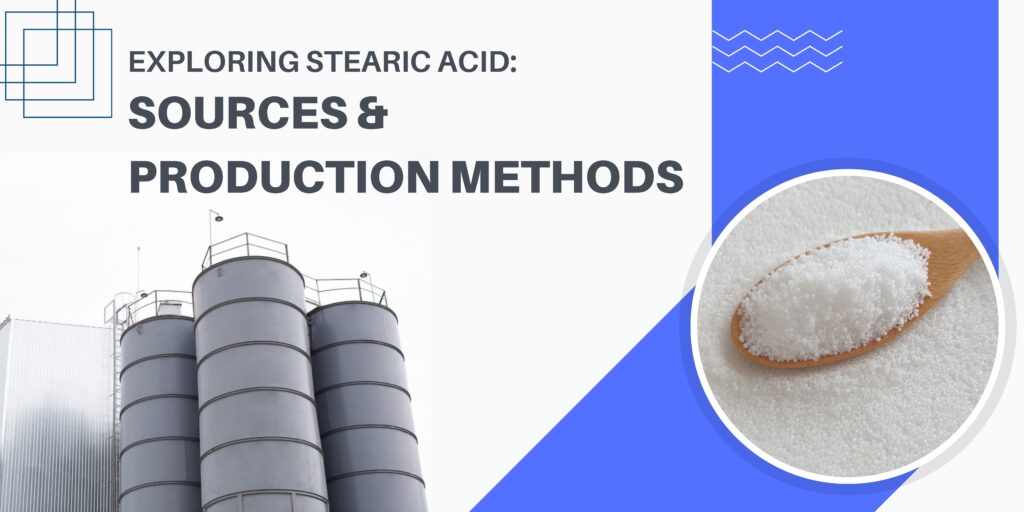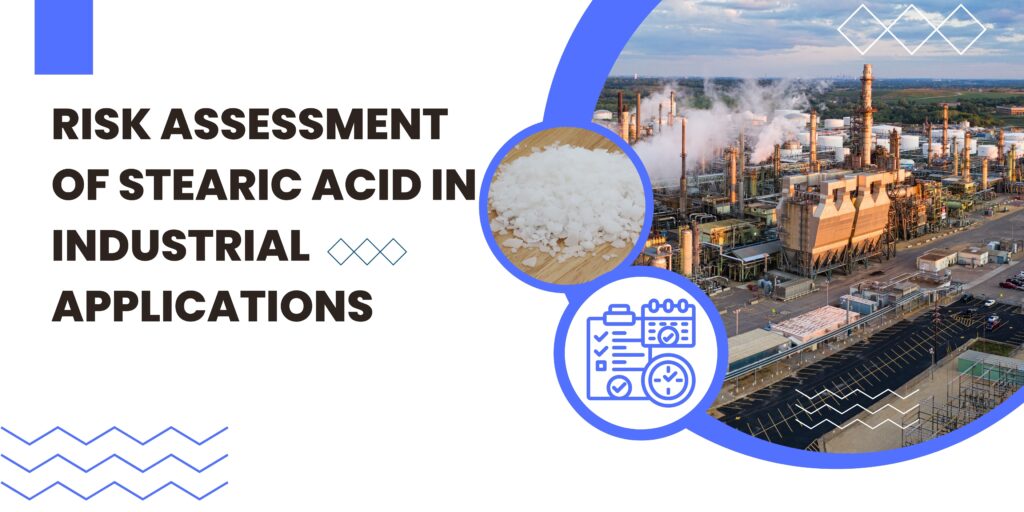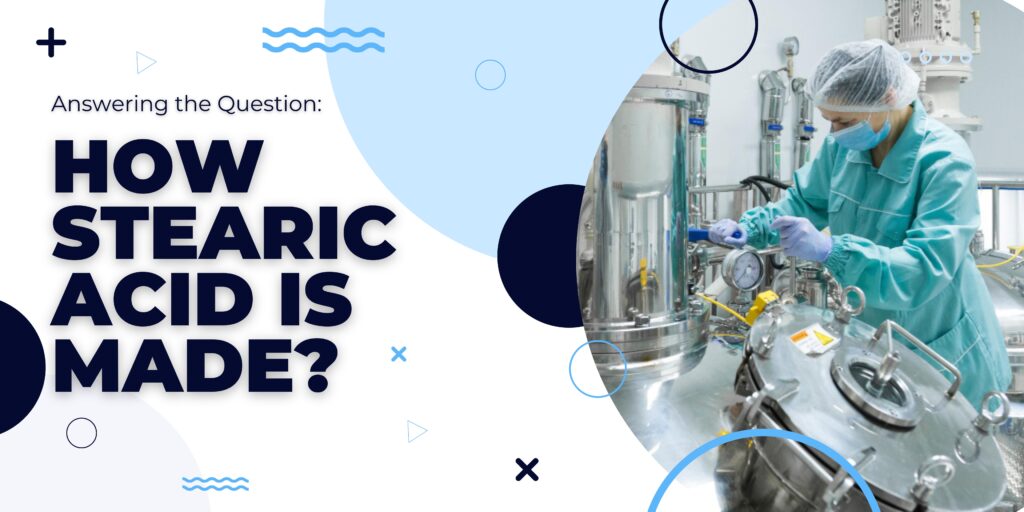
Stearic acid, a saturated fatty acid, has found extensive applications across various industries due to its versatile properties. One of its significant applications is in the rubber industry, where it plays a crucial role in enhancing the processing and performance of rubber materials. This article delves into the realm of stearic acid in the rubber industry, focusing on its functions, benefits, and applications in rubber-grade formulations.
Overview of Stearic Acid
Stearic acid, also known as octadecanoic acid (C18H36O2), is a long-chain fatty acid with 18 carbon atoms. It is derived from various sources, including animal fats, palm oil, and tallow. Stearic acid is characterized by its white, waxy appearance and is known for its stability and chemical inertness, making it a valuable additive in several industrial processes.
Properties of Stearic Acid
Physical Properties
- Melting Point: Stearic acid has a high melting point, typically around 69-72°C (156-162°F), making it suitable for various applications, including rubber processing.
- Solubility: It is relatively insoluble in water but soluble in organic solvents such as ethanol, ether, and chloroform.
Chemical Properties
Stearic acid is a saturated fatty acid, meaning it does not contain any double bonds in its carbon chain. This saturation contributes to its stability and resistance to oxidation.
Stearic Acid in Rubber Manufacturing
Stearic acid serves multiple purposes in the rubber industry, particularly in the production of rubber products. Its role encompasses various stages, including compounding, mixing, processing, and improving the final product’s properties. The primary functions of stearic acid in rubber-grade formulations are:
1. Process Aid and Lubricant
Stearic acid acts as a process aid during rubber compounding and mixing. It reduces the friction and adhesion between rubber molecules, facilitating smoother processing and better mold release properties. This characteristic is particularly crucial in the manufacturing of rubber products like tires and industrial rubber goods.
2. Crosslinking Agent
In rubber vulcanization, stearic acid acts as a co-agent to sulfur, promoting crosslinking between the rubber chains. This crosslinking is vital for enhancing the rubber’s strength, durability, and resistance to heat and aging. Stearic acid enables the formation of a robust rubber network, thereby improving the overall performance of the final product.
3. Activator for Accelerators
Stearic acid functions as an activator for rubber accelerators, enhancing their effectiveness in promoting vulcanization. It acts by reacting with zinc oxide (ZnO), which is a common activator in rubber compounding. This interaction improves the curing process, resulting in better mechanical properties and reduced cure time.
4. Acid Acceptor and pH Stabilizer
During vulcanization, stearic acid acts as an acid acceptor, neutralizing the acidic byproducts formed in the reaction. Maintaining the proper pH levels is essential for achieving optimal crosslinking and preventing any adverse effects on the rubber compound.
Applications of Stearic Acid in Rubber Products
The versatile properties of stearic acid make it an essential component in various rubber products across industries. Some notable applications include:
1. Tire Manufacturing
Stearic acid is a crucial additive in tire production. Its use in tire compounds improves processing, enhances wear resistance, and provides better adhesion between the rubber and reinforcing materials like steel cords or fabric.
2. Industrial Rubber Goods
In the production of industrial rubber goods such as conveyor belts, hoses, and gaskets, stearic acid facilitates the processing of rubber compounds. It imparts desirable properties such as increased hardness, tear strength, and abrasion resistance.
3. Automotive Components
Stearic acid is also utilized in manufacturing various automotive rubber components like seals, grommets, and vibration isolators. Its contributions to rubber compounds enhance the longevity and performance of these critical automotive parts.
4. Footwear and Sporting Goods
Rubber used in footwear and sporting goods benefits from stearic acid’s presence. It aids in the efficient mixing of rubber compounds and enhances the material’s properties, making the end products more durable and wear-resistant.
Stearic Acid Grades for Rubber Applications
Stearic acid used in the rubber industry is classified into different grades based on its properties and intended applications. The specific requirements of rubber compounds dictate the choice of stearic acid grade. Some common stearic acid grades used in rubber applications include:
1. Rubber-Grade Stearic Acid
This grade is specifically manufactured to meet the demands of rubber processing. It has a high melting point, ensuring effective mixing and processing at elevated temperatures. Rubber-grade stearic acid acts as an excellent process aid and crosslinking agent during vulcanization.
2. Double-Pressed Stearic Acid
Double-pressed stearic acid undergoes an additional purification process, resulting in higher purity levels. It is often preferred in high-quality rubber compounds where purity and consistency are critical factors for achieving desired mechanical and processing properties.
Conclusion
Stearic acid holds a significant position in the rubber industry, playing vital roles in the formulation and processing of rubber compounds. Its influence on the vulcanization process, coupled with its function as a lubricant and acid acceptor, contributes to the enhancement of rubber properties. Manufacturers and researchers continue to explore new ways to optimize the utilization of stearic acid in rubber-grade formulations, aiming to develop advanced rubber products with superior performance and durability. As advancements in material science progress, the role of stearic acid in the rubber industry is likely to evolve, paving the way for enhanced rubber materials with broader applications and improved sustainability.




